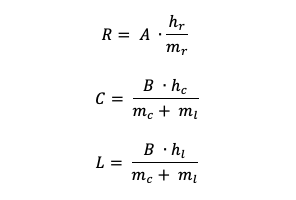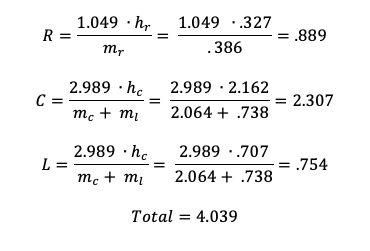Using Payroll-Based Journal Data to Compute Nursing Hours
Calculating staff hours correctly can be a determining factor in a nursing facility’s Five-Star Quality Rating.
Smerczynski, Mastrangelo
12/14/2020
Starting in spring 2018, the Centers for Medicare & Medicaid Services (CMS) began using Payroll-Based Journal (PBJ) data to determine each nursing facility's staffing levels for the Nursing Home Compare tool used in the agency's Five-Star Quality Rating System. Accurate reporting is essential to a fair rating.
How PBJ Works
The PBJ system provides the reported staffing hours for each quarter. These data, based on Minimum Data Set (MDS) assessments, are used for CMS staffing calculations and are the basis for a nursing facility's Five-Star Rating. There is an added complexity, since CMS adjusts the reported staffing hours before calculating the ratings.
The adjusted hours  Ha for each staff type are given by using the formula:
Ha for each staff type are given by using the formula: 
 where Hr
where Hr  represents the reported hours. The adjustment is based on h
represents the reported hours. The adjustment is based on h , the case-mix or expected nurse staffing hours per resident per day and the national mean m
, the case-mix or expected nurse staffing hours per resident per day and the national mean m  of case-mix hours for all facilities.
of case-mix hours for all facilities.
The case-mix values are derived from STRIVE, which is a CMS Staff Time Resource Intensity Verification Study (2006-2007) that measured the average hours per resident per day for each staff type: RN (registered nurse), LPN (licensed practical nurse) and CNA (certified nurse assistant) based on the associated Resource Utilization Group (RUG-IV) 66.
Rating Methodologies
The Rating Methodology Rules shown below in Table 1 (taken from Table 4) of the July 2020 CMS Technical Users Guide, “Design for Nursing Home Compare Five-Star Quality Rating System."

Nursing Levels Categorized
It is important to note that two separate staffing level ratings are published by CMS.
One rating is for RN Staffing, and the other is the Overall Staffing. As illustrated in the table above, RN hours greater or equal to 1.049 will result in a Five-Star RN Rating. The combined sum of RN + LPN + CNA greater than or equal to 4.038 will give an Overall Five-Star Rating. The combination of adjusted values that result in 5, 4, and 3 stars, respectively, are summarized in Table 2 below.

Harmony Healthcare International (HHI) has developed three simple algorithms to estimate the staffing levels necessary for a given Star Status. In the equations below, R, C, and L represent the RN, CNA , and LPN reportable nurse staffing hours per resident per day needed to guarantee a given Star Ratings Level.
The case mix hours symbol h is the expected hours per patient per day based on the composite of RUG-IV values over a quarterly time period. The quantity h is indirectly related to case-mix indices in a nonlinear manner and is distinct for each SNF. The symbol m is the mean of case-mix hours averaged over all SNFs.

 Previous statistical data suggest that case-mix indices and adjustment factors vary very slowly over time for most facilities. Therefore, it is reasonable to assume that the values assigned in a given time period can be used to estimate the reported values in a subsequent time period to gain the desired star status.
Previous statistical data suggest that case-mix indices and adjustment factors vary very slowly over time for most facilities. Therefore, it is reasonable to assume that the values assigned in a given time period can be used to estimate the reported values in a subsequent time period to gain the desired star status.
As an example, consider the case-mix values for a given facility shown in Table 3 taken from the CMS Medicare Nursing Home Compare Website.

The calculations to attain a Five-Star rating for the case-mix data listed in Table 3 are as follows:

The same technique can be used to determine the reportable hours per patient per day for 4- or 3-Star Ratings.
Kris Mastrangelo, OTR/L, LNHA, MBA, is chief executive officer and president of Harmony Healthcare International. She can be reached at Kmastrangelo@harmony-healthcare.com. James E. Smerczynski has been with Harmony Healthcare since retiring from Raytheon in 2012. He has an extensive background in integrated weapon system engineering that includes the Patriot Air Defense System, Advanced Lightweight Torpedo, and Hawk Missile System. Smercznynski has considerable experience in applied mathematics that directly applies to the probability and statistics analytics of the health care industry. He also does analytics for the startup software company Hopforce.